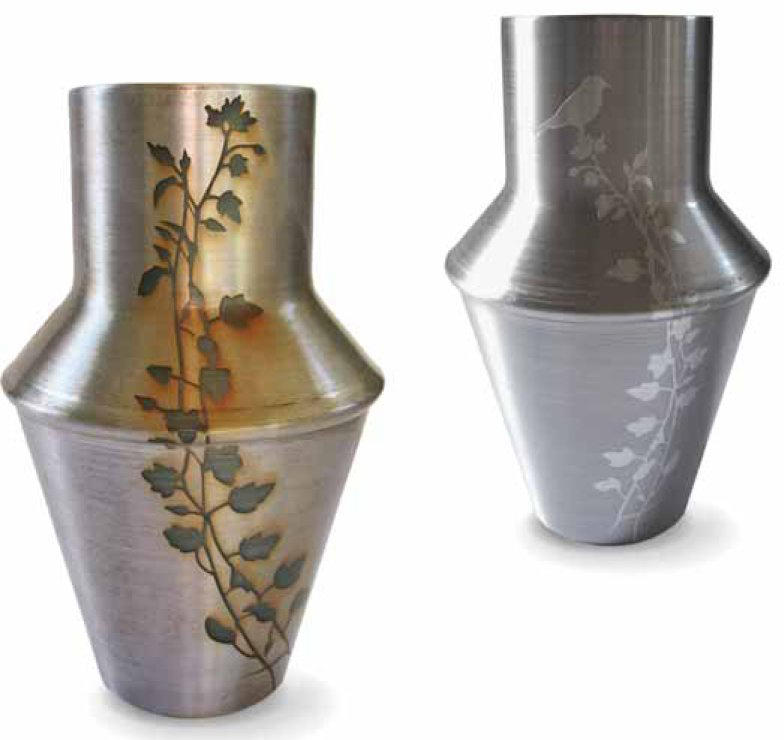Tin is one of those materials that like paper (‘paperthin’), has entered common language to become an adjective, think of a ‘tinny’ sound. Partly as a result of this, it’s not a material with associations of high value. Apart from its low perceived value, it also lacks any of the strong associations of other metals, such as aluminium, with its contemporary design applications or copper, with its associations of traditional kitchens.
Apart from being the main constituent of pewter, tin is also used prolifically within the packaging industry. If you come across a metal box, then the chances are that it is made from tinplate – steel coated on both sides with tin – a form of tin that equips it with good corrosion resistance. In its uncoated form, it can often be confused with aluminium due to its anaemic white, lustrous colour and surface finish. Aside from packaging, which accounts for about 90 per cent of its production, tinplate, which compared to other metals is relatively soft, is also familiar as the sheet metal from which simple toys are fabricated.
The history of tin dates back to the fourteenth century when it was the basis of a large craft tradition that involved cutting and folding sheets of tinplate. Even today there is still The Worshipful Company of Tin Plate Workers in the UK. Perhaps one of the most interesting aspects of tin is that it makes a sound when it is bent. Known as ‘tin cry’, the sound comes from the crystals deforming.
Image: Bloom vase by Meirav Barzilay

•Soft and very malleable
•Easily forms alloys with other metals
•Good resistance to corrosion, excluding mineral acids (sulphuric acid, hydrochloric and nitric-acid)
•Low melting point, 232˚C (449ºF)
•Recyclable
Sources
The largest producers of tin are China and Indonesia, followed by a number of South American countries including Peru and Brazil.
Cost
£13.80 ($20) per kg.
Sustainability issues
Tin is non-toxic and is widely recycled.
Production
Tin plate can be rolled, easily soldered, die pressed, punched, laser cut and will react well to most other processes associated with sheet metal work for either one-off or mass production. Also, due to its low melting point, tin can be cast using very basic and inexpensive techniques in addition to conventional mass production casting methods.
Typical applications
Most tin is used for solder and tinplate. Together with lead, it has one of the lowest melting points of metals. Tinplate is one of the most popular materials from which clockwork toys are made. Other uses include old-style toothpaste tubes and plating for steel ‘tin cans’. It is also used as the liquid onto which glass is floated to produce ‘float glass’.
Derivatives
–Pewter typically contains over 85% tin
–Bronze
–Brass contains no more than 40%
–Fields Metal contains around 17% tin
| + | – |
|
–Wide range of uses –Versatile processing –Corrosion resistant –Low cost –Recyclable |
–Can suffer from low perceived value |
